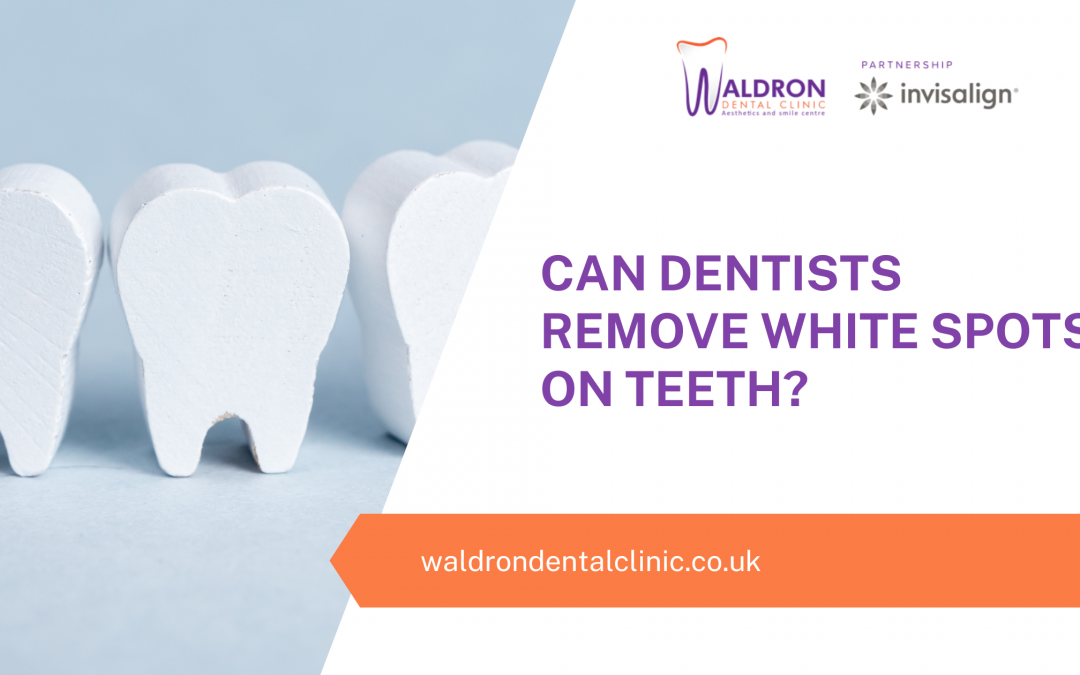Braces wearers often observe white spots around their teeth after the completion of their orthodontic treatment. Unfortunately, these white lesions not only affect one’s appearance and smile but also indicate the weakening of the tooth enamel. Therefore, white spot lesions should not be taken lightly.
But what are white spot lesions, and how can my dentist remove them? You may ask. The answer to this question and many others is discussed in this blog. So, read on to learn more about white spot lesions and their management.
Are White Spots On Teeth Calcium?
White spot lesions can occur for many reasons, the most common being demineralisation of the tooth enamel.
- Tooth demineralisation refers to removing calcium and phosphate – building blocks of bones and teeth – leaving behind a vulnerable tooth enamel. White spot lesions can also be caused due to poor oral hygiene around dental braces.
- Another reason for the appearance of white spot lesions is dental fluorosis. According to the US Centers for Disease Control and Prevention, dental fluorosis is when children are exposed to very high fluoride levels during their teeth development years, making them weak and brittle.
- Another cause of fluorosis is enamel hypoplasia – a condition caused due thinner enamel than usual. Enamel hypoplasia can be caused by vitamin deficiency, hereditary factors, and certain medications.
Why Do Some Teeth Have Random Bright White Spots On Them?
Random white spots on teeth can be due to congenitally weak enamel or tooth decay. White lesions typically appear as an early sign of tooth decay and mineral loss. If this condition is not treated timely, the enamel around these lesions gets degraded, leading to the formation of dental cavities.
How Do I Get Rid Of White Spots On My Teeth?
There are several options available to treat white spot lesions. These are:
- Topical Mineralisation – topical remineralisation agents like fluoride varnishes and silver diamine fluoride have proven helpful in restoring the strength of the affected teeth.
- Microabrasion – this technique removes a fine layer of the enamel, improving overall facial aesthetics.
- Dental Bleaching – sometimes, bleaching is also helpful in masking white spot lesions.
- Cosmetic Bonding – this is a procedure in which a tooth-coloured restorative material is applied to the affected teeth to mask the white stains.
- Porcelain Veneers – veneers are thin shells of porcelain or composite resins bonded to the front surfaces of the teeth to mask white spot lesions and other teeth stains.
- Lumineers – lumineers can also be used to white spot lesion stains.
How Can I Lose White Stains On My Front Teeth?
White spot lesions on the front teeth can create a significant aesthetic issue. To remove these lesions, your dentist can use cosmetic bonding or porcelain veneers. Both these options cosmetically treat the underlying issue.
Can You See White Spots On Your Teeth With Braces On?
White spot lesions typically form around dental braces due to the demineralisation of the tooth enamel. However, these lesions are usually not visible while one wears the braces. Unfortunately, they become visible only when the treatment is completed, and the braces are removed.
What Do The White Lines On My Teeth Mean?
As discussed earlier, white spot lesions can occur due to various reasons. However, the most common among them is the demineralisation of teeth. Demineralisation occurs when harmful bacteria inside the dental plaque release toxins that make the pH of the mouth acid. This intiiates a process in which the minerals in the teeth come out into the saliva, making the teeth weak and prone to tooth decay. White spot lesions are an early indication of the tooth decay process. Further progression of dental decay results in damage to the dental enamel, leading to cavity formation.
How To Clean Coffee-Stained Teeth Without Damaging Them?
There are several ways to treat white spot lesions without damaging the teeth. For example, your dentist can perform microabrasion, a procedure in which a thin enamel layer is removed to expose a fresh, stain-free enamel surface. Similarly, cosmetic bonding and porcelain veneers are excellent options to remove white spot lesions without damaging the affected teeth.
Does Dental Fluorosis Get Worse?
Dental fluorosis is untreatable. However, reparative measures must be taken to prevent further damage to the teeth. This is because various complications can occur in fluorosis-affected teeth that are not managed appropriately. For example, untreated fluorosis continues to weaken the teeth, making them cavity-prone and liable to get stained over time. Similarly, tooth decay due to dental fluorosis can make the teeth sensitive to hot or cold foods and drinks.
Dental fluorosis can significantly affect one’s facial aesthetics and quality of life. However, the good news is that the damage from dental fluorosis can be prevented with appropriate management. So, parents should bring in their children for preventive treatment if they suffer from dental fluorosis.
If you are looking for a renowned dental practice offering family dentistry services in New Cross, London, look no more! Waldron Dental offers all general and cosmetic dental services under one roof. Whether you need braces for your kids or treatment for white spot lesions, we are there to take care of all your dental needs. Besides, we offer dental services at affordable rates and accept all major insurance plans across the UK. So, what are you waiting for? Book an appointment today, and let us give you a beautiful and healthy smile. We look forward to seeing you at our New Cross, London office.








